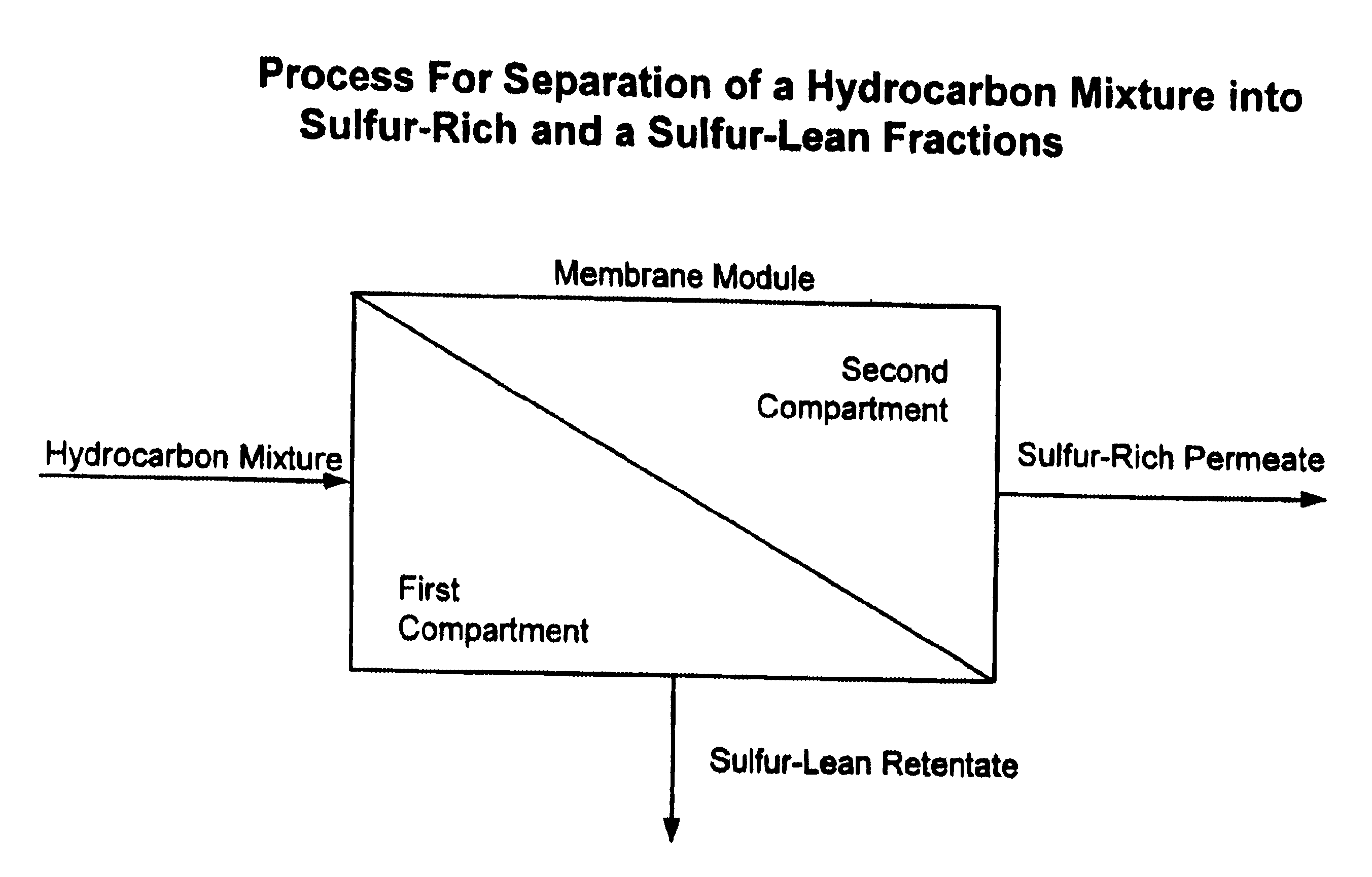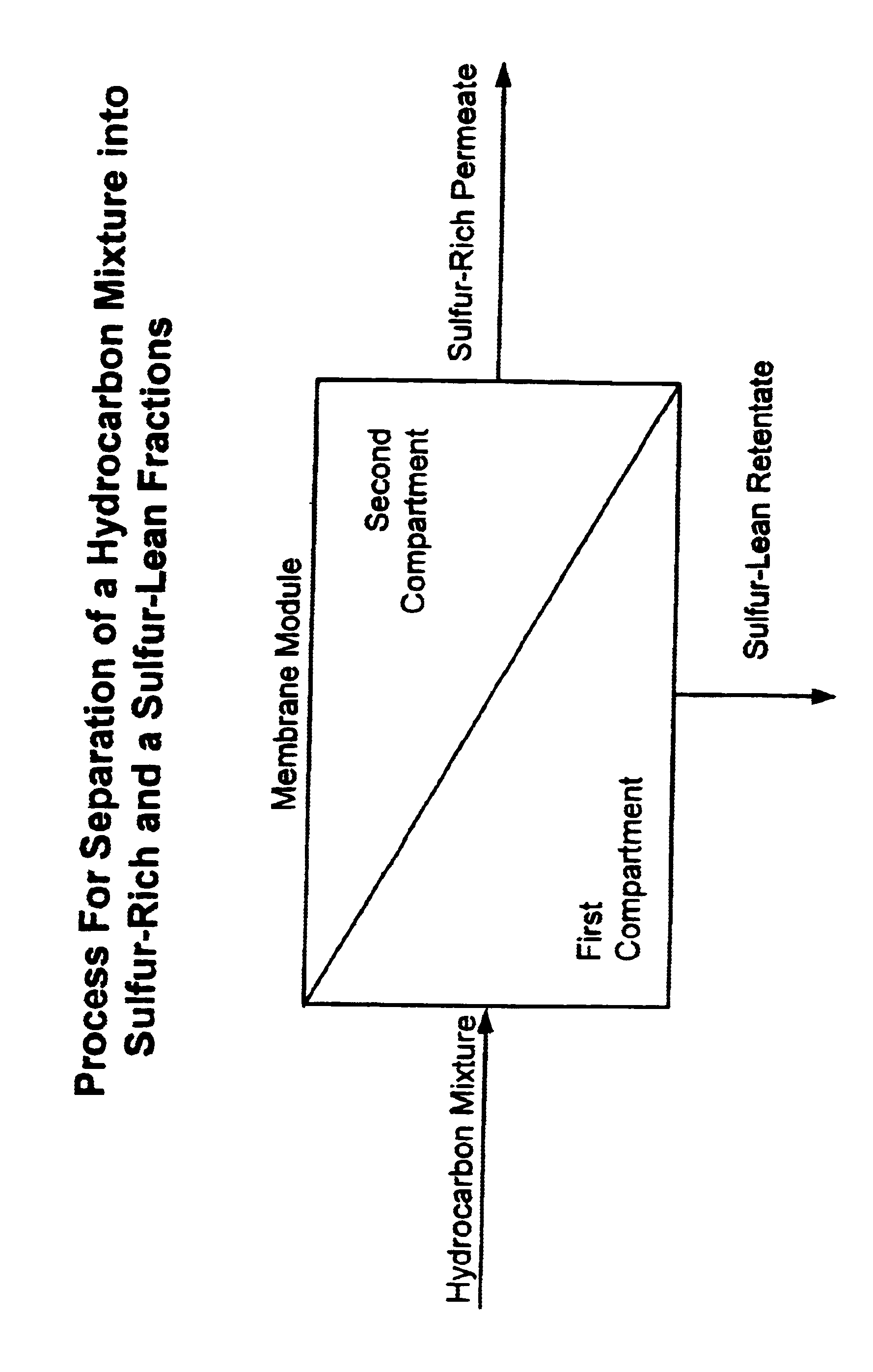Ionic membranes for organic sulfur separation from liquid hydrocarbon solutions
a technology of organic sulfur and liquid hydrocarbon solution, which is applied in the direction of membranes, distillation, dialysis, etc., can solve the problems of high cost, high energy consumption, and inability to achieve the proposed lowering of sulfur levels,
- Summary
- Abstract
- Description
- Claims
- Application Information
AI Technical Summary
Benefits of technology
Problems solved by technology
Method used
Image
Examples
example 1
Separation of Sulfur Compounds Using Nafion.RTM.-Type Membranes.
Table 1 lists the results of pervaporative separation experiments using various Nafion.RTM.-type membranes and a synthetic feed solution with a composition of 10:48:31:10:1 methanol:toluene:heptane:1-octene:thiophene by weight. Enhanced selectivity is observed for ion-exchanged and base-treated membranes, and the positive effects of a transport agent are evident. In Table 1, selectivity is expressed as the ratio of thiophene to other mixture components in the permeate. Enhanced selectivity of thiophene over the other mixture components is shown by higher selectivity ratios compared with the feed ratios given in the first line of the table.
example 2
Separation of Sulfur Compounds Using Nafion.RTM.-Type Membranes.
Table 2 shows results of a pervaporative separation experiment using triethanolamime-treated Nafion.RTM. membrane and light FCC gasoline feed diluted with 10% by weight methanol. The total sulfur content in the hydrocarbon mixture, disregarding the methanol component, increases from 950 ppm to about 5000 ppm in the permeate. Selectivity ratios indicate the higher sulfur content of the permeate.
PUM
| Property | Measurement | Unit |
|---|---|---|
| thickness | aaaaa | aaaaa |
| thickness | aaaaa | aaaaa |
| thickness | aaaaa | aaaaa |
Abstract
Description
Claims
Application Information
 Login to View More
Login to View More - R&D
- Intellectual Property
- Life Sciences
- Materials
- Tech Scout
- Unparalleled Data Quality
- Higher Quality Content
- 60% Fewer Hallucinations
Browse by: Latest US Patents, China's latest patents, Technical Efficacy Thesaurus, Application Domain, Technology Topic, Popular Technical Reports.
© 2025 PatSnap. All rights reserved.Legal|Privacy policy|Modern Slavery Act Transparency Statement|Sitemap|About US| Contact US: help@patsnap.com


